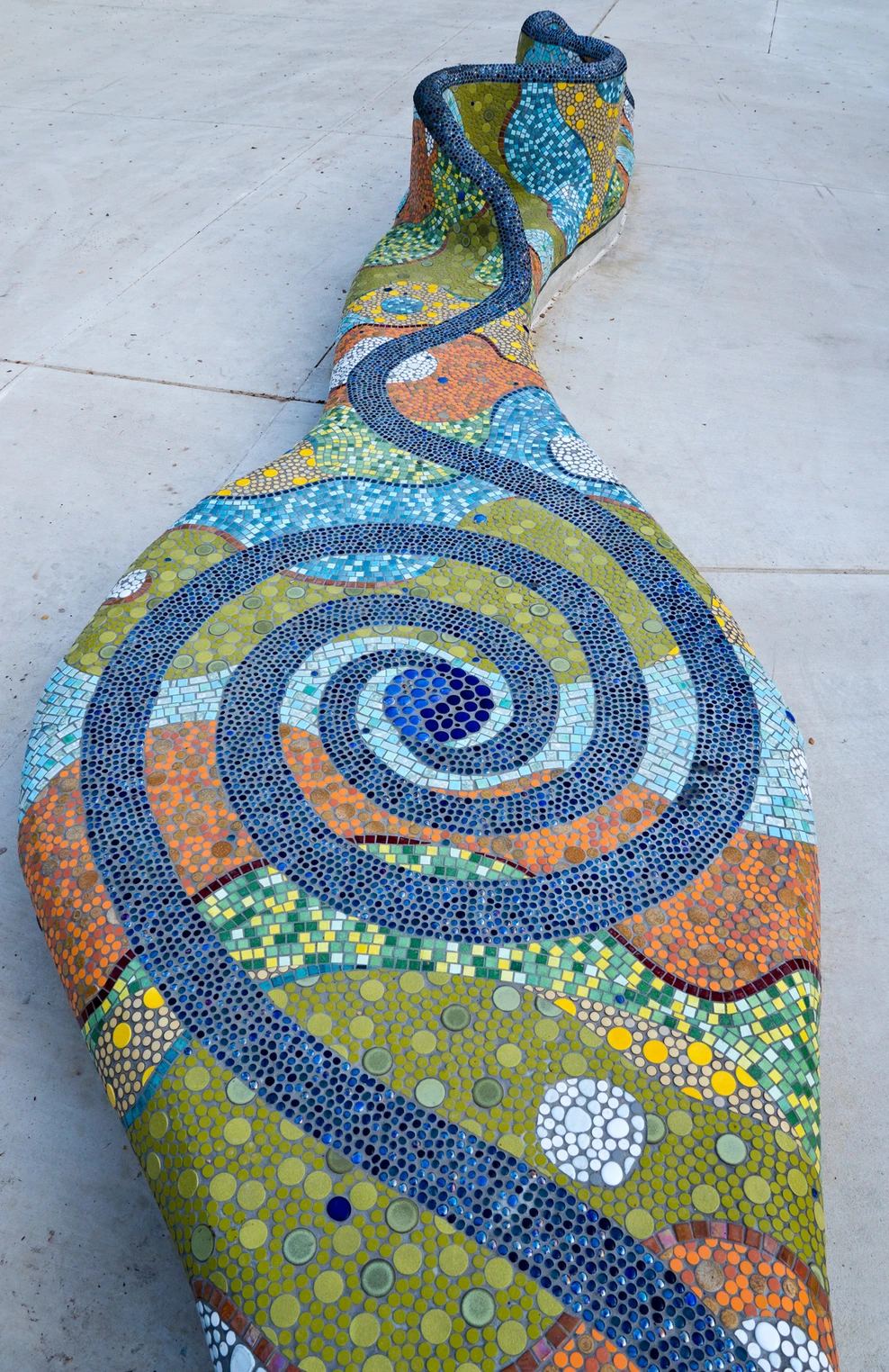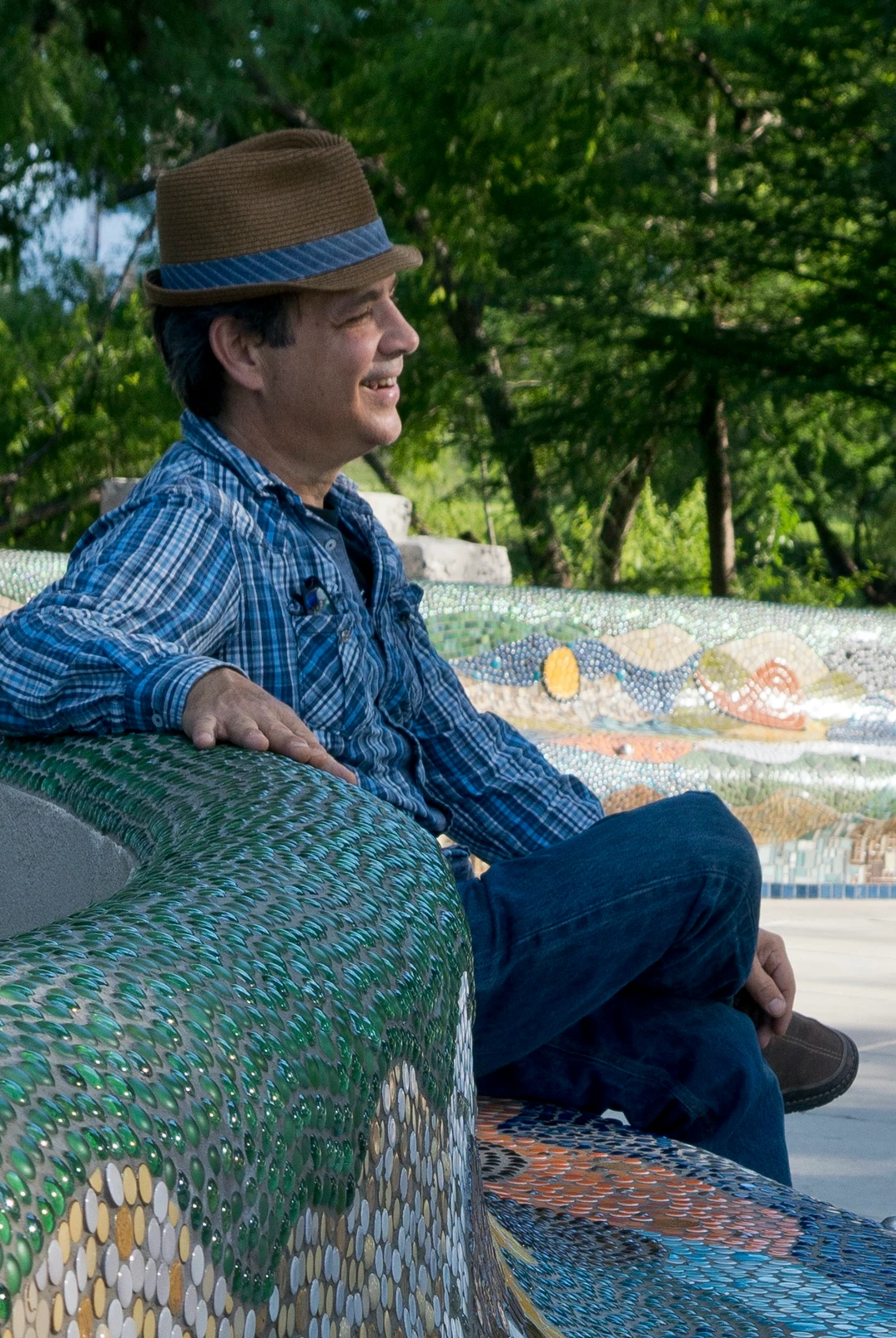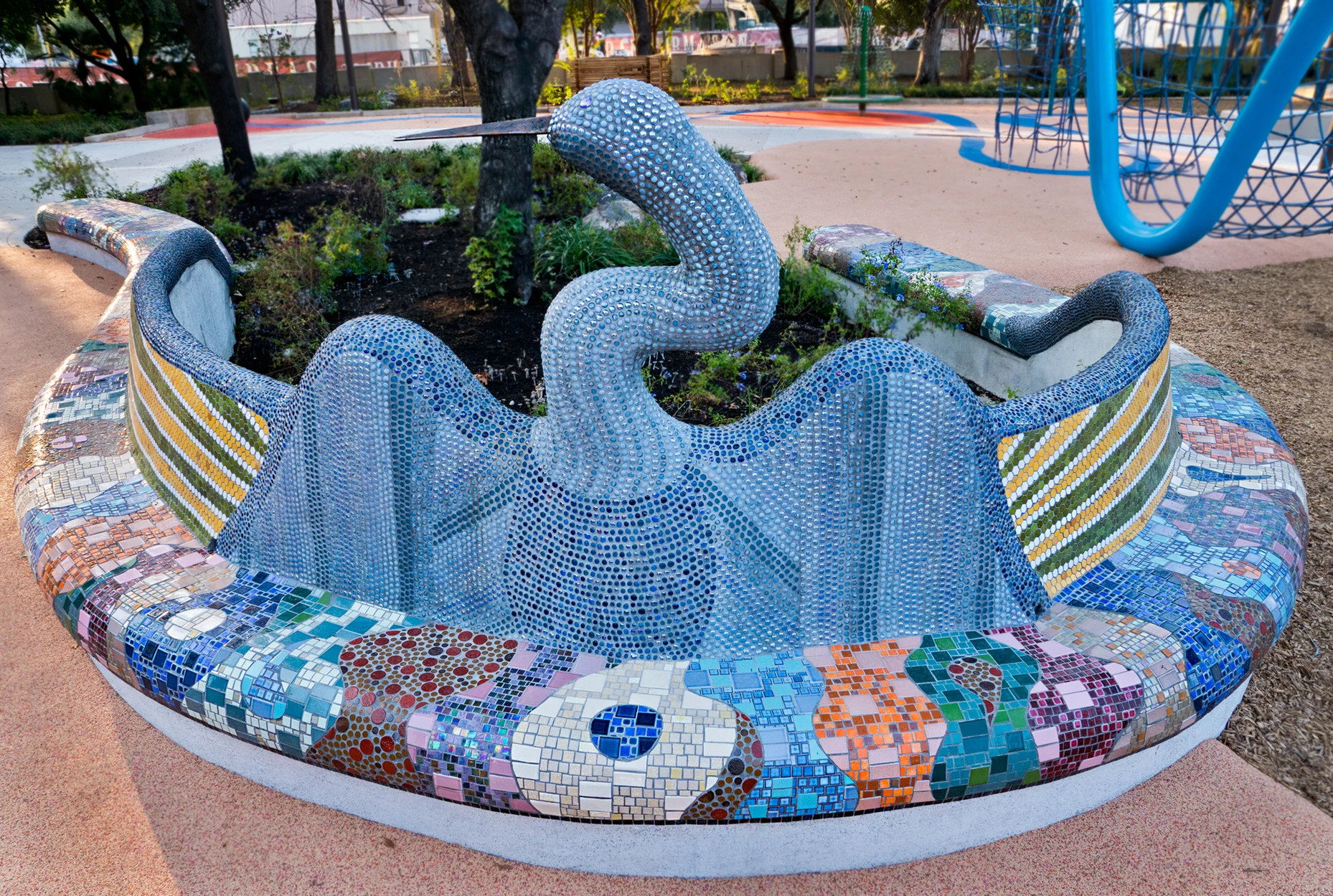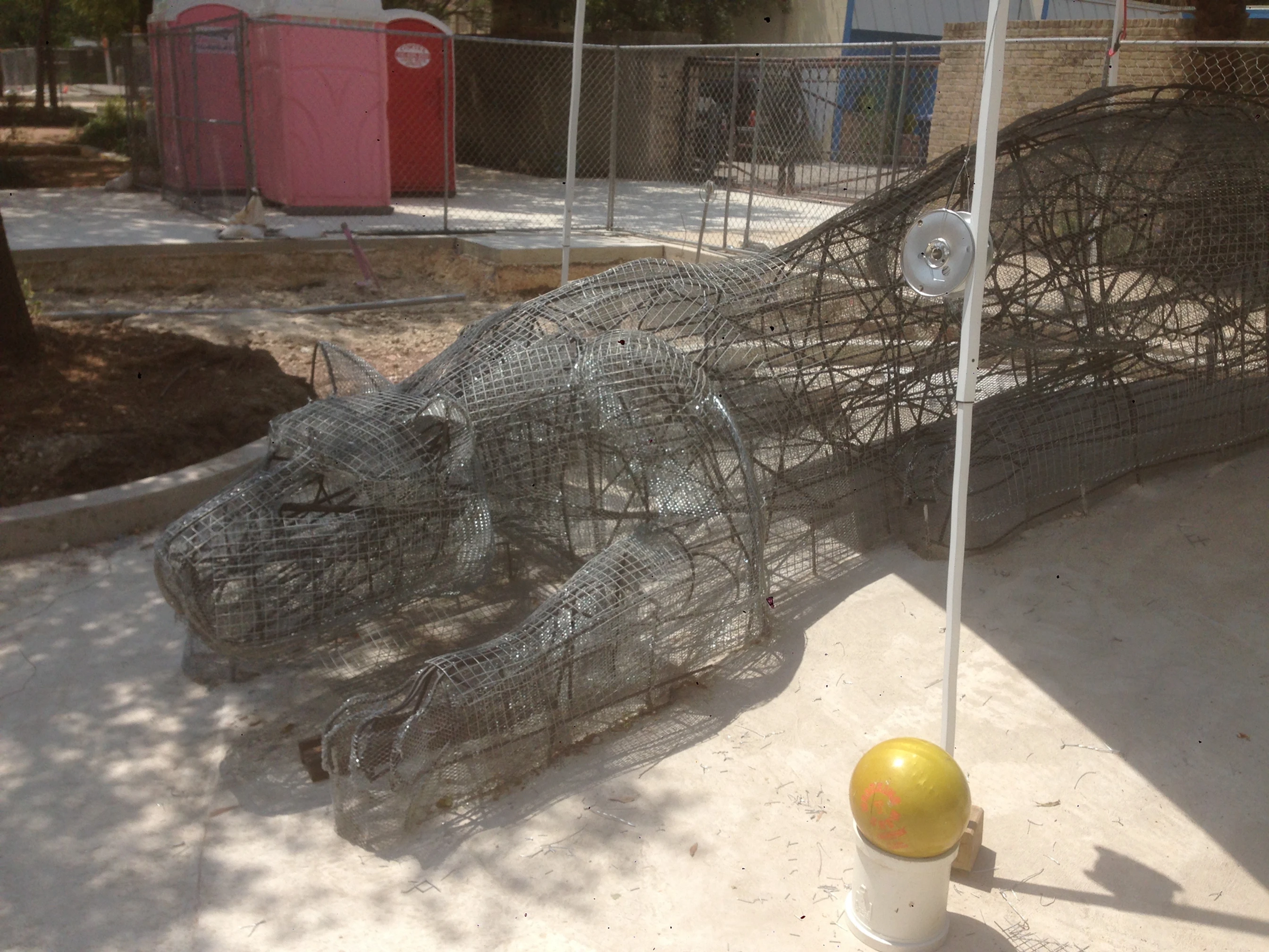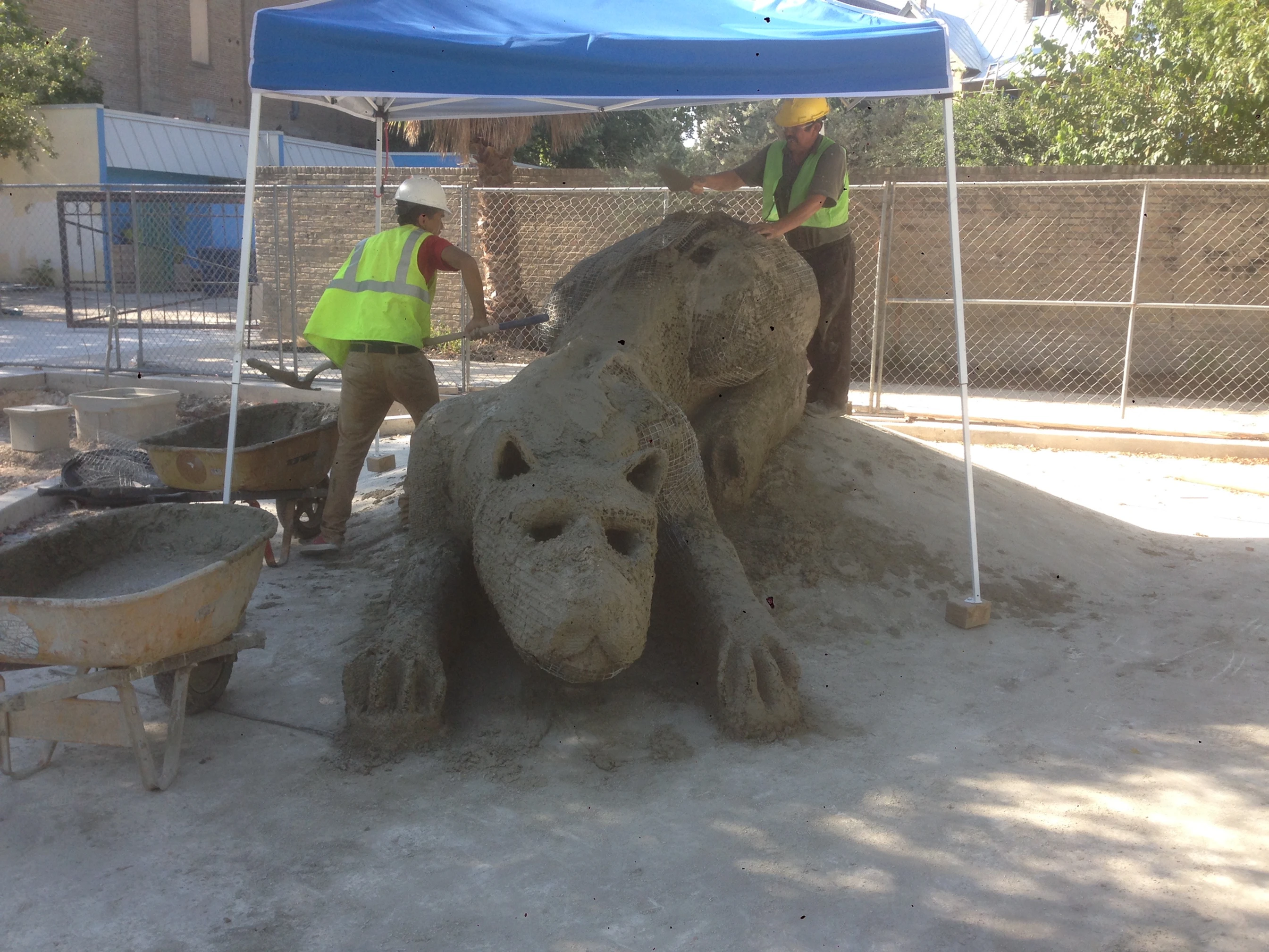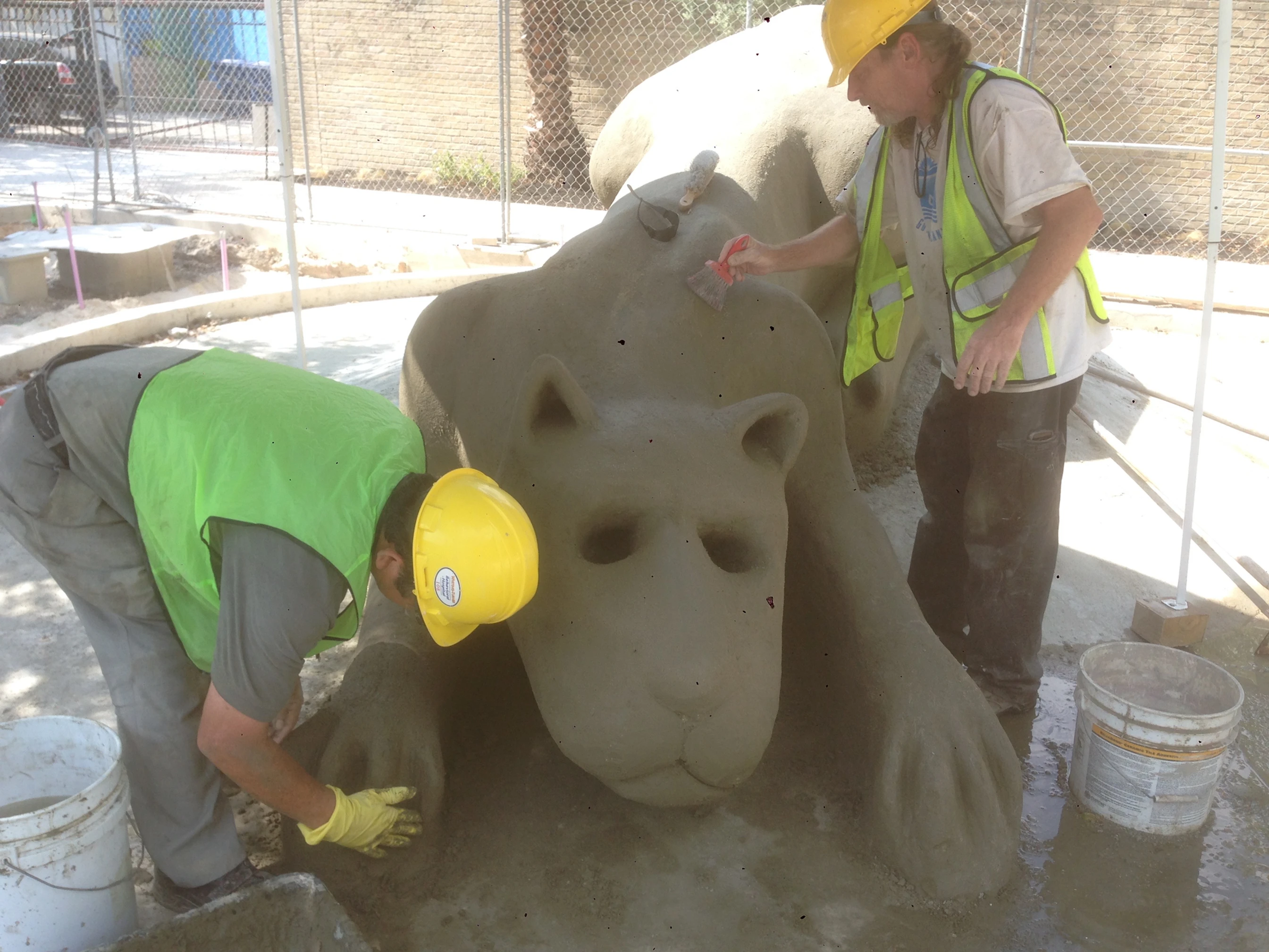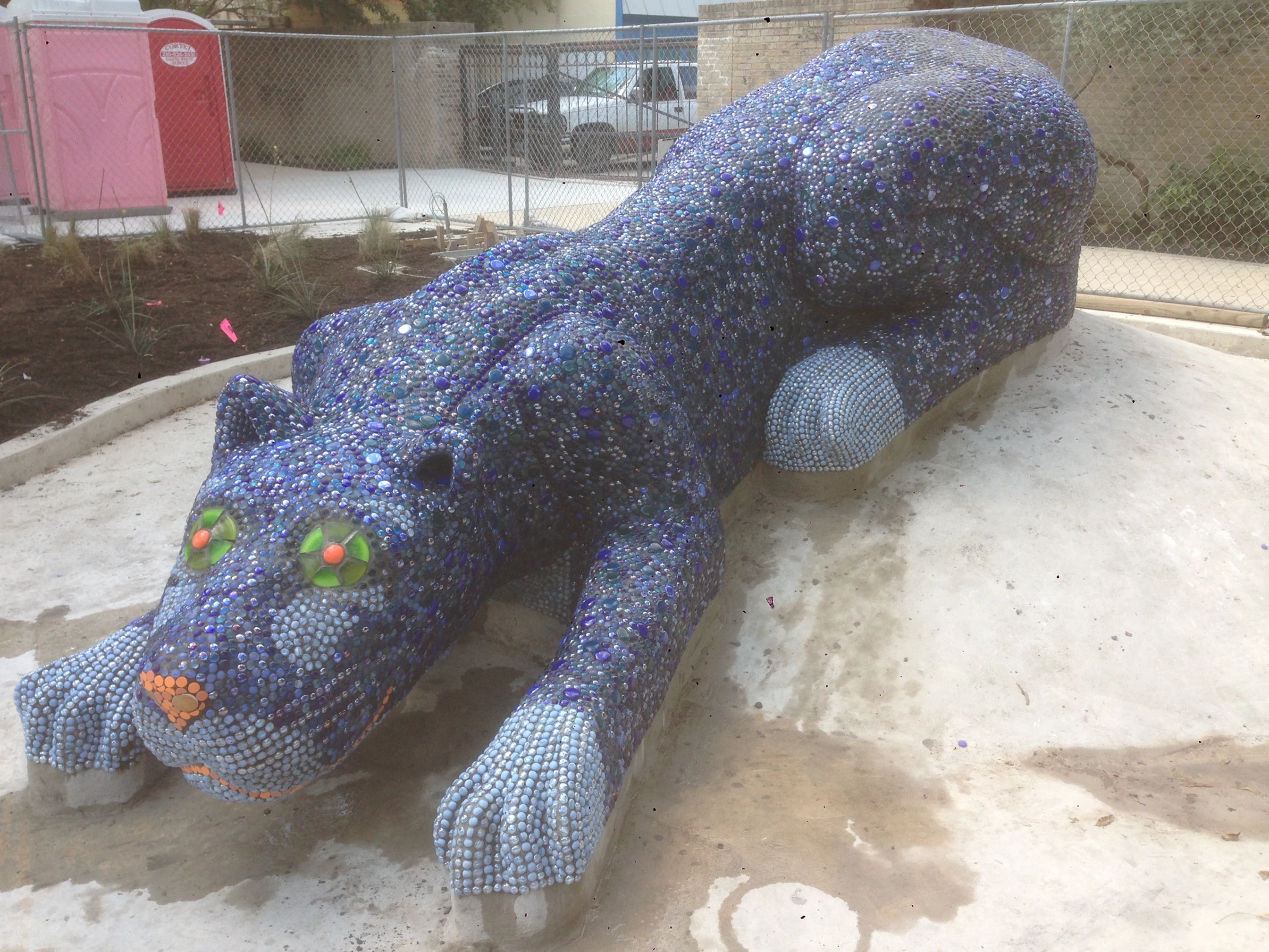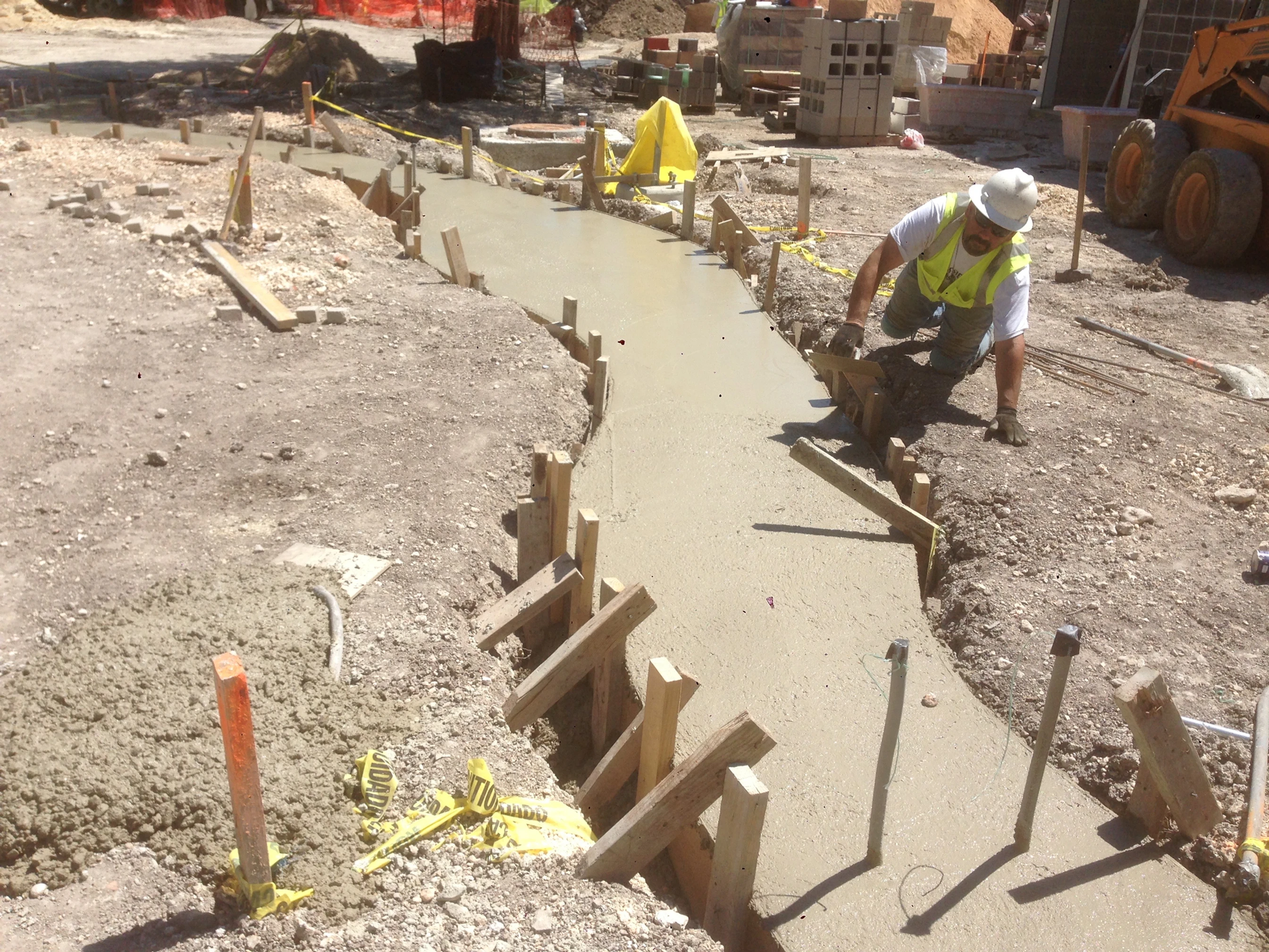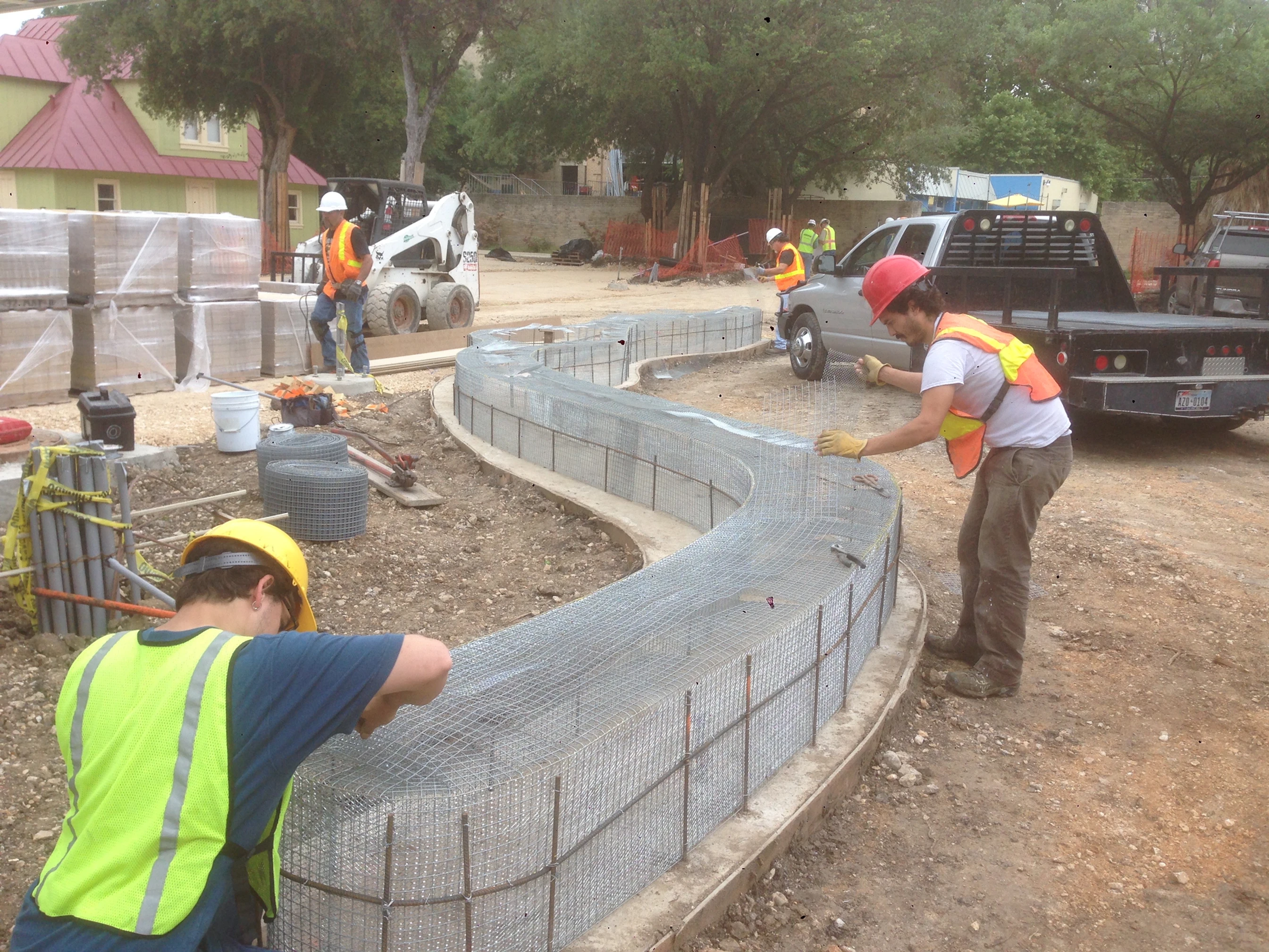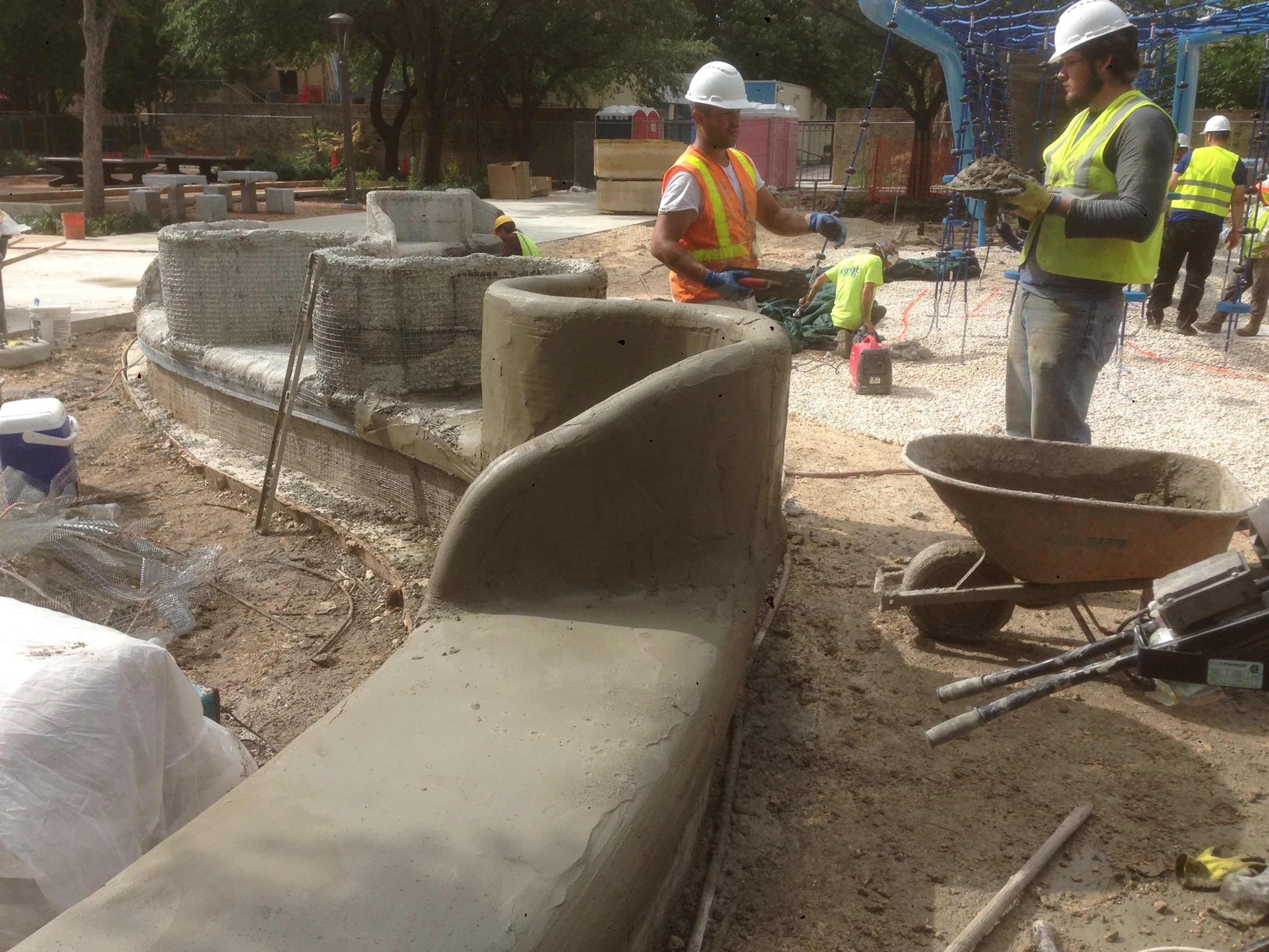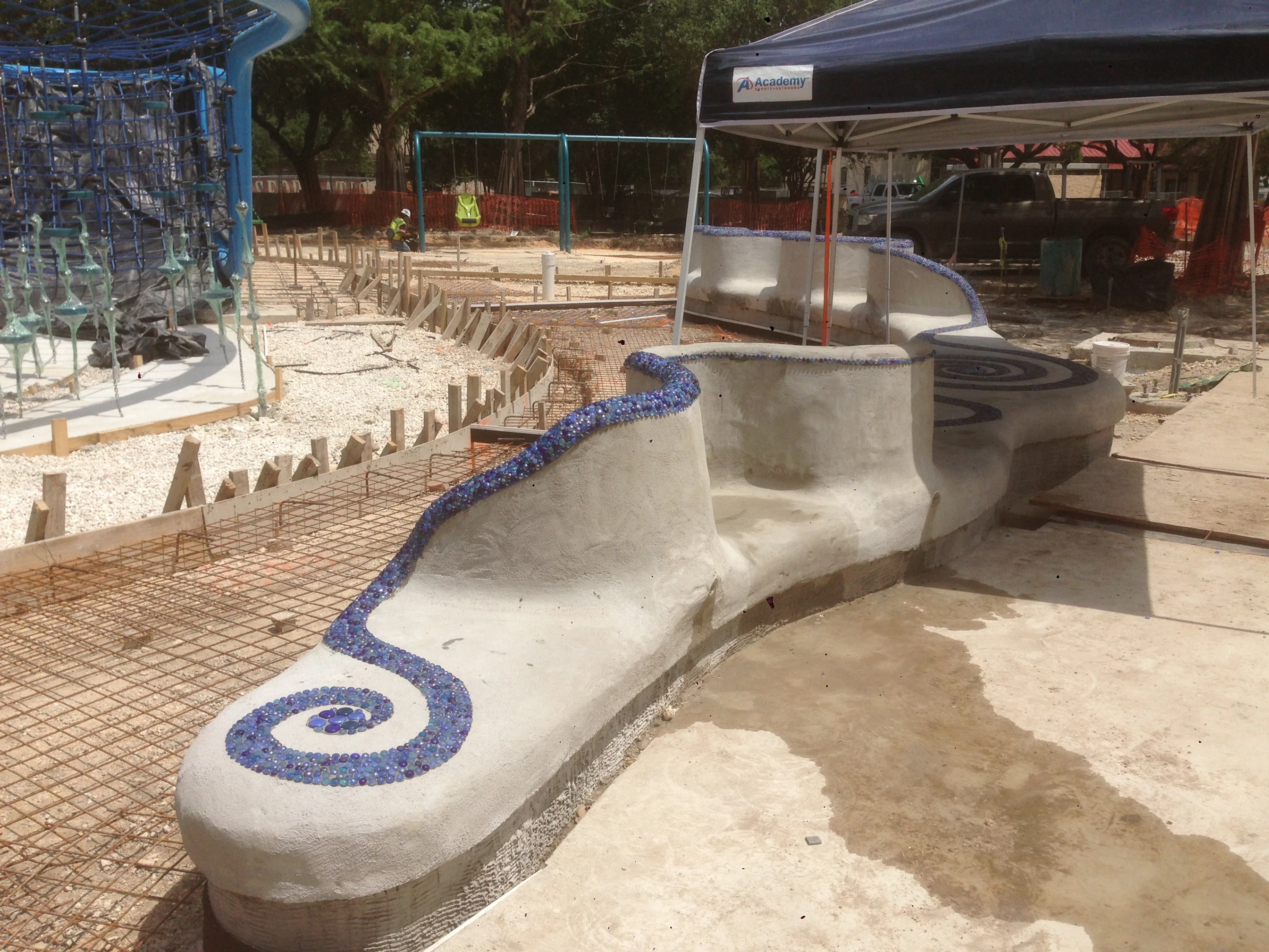
ART THAT LASTS
The seven-ton sculpture of a Blue Panther was just part of a much bigger project. Read how it came about in this article excerpted from the LNF Weekly online magazine.
Creating Panter Azul in Yanaguana Garden

This article is excerpted from a longer piece that was published in San Antonio's LNF Weekly online magazine in September of 2020. The excerpt is used with the permission of LNF Weekly.
YANAGUANA GARDEN
Oscar Alvarado’s best-known work is the PanterAzul (Blue Panther) sculpture in Hemisfair’s Yanaguana Garden.
Ironically, Alvarado was not selected as an artist for Yanaguana Garden — he was hired by the landscape architects to build benches. Nonetheless, his panther is probably the most successful piece of art in the Garden, rising organically from the grounds of the play area, perfectly capturing the spirit of the place, and seeming to radiate joy.
It has become the iconic image of Yanaguana Garden.
The panther was originally part of the design for a long bench that used sculptural components and mosaics to tell the indigenous Payaya people’s origin story for the San Antonio River. The bench design featured the panther, an anhinga bird, and the ‘blue hole’ — the spring from which the Yanaguana River arises.
In addition to the Panther Azul, Alvarado's depiction of the Payaya origin story includes, as part of the Garden's benches, an anhinga bird and the blue hole from which the river arises.
But the landscape architects had a concern. They worried that kids would climb on the panther, and, if they fell, would land on the concrete bench and injure themselves.
The play area in Yanaguana was designed to have a soft surface, so Alvarado suggested that they remove the panther from the bench and make it a standalone sculpture out in the play area. There, if kids fell, they’d land on the soft play surface.
That was a critical design decision. Freed from the bench, the panther became a more dramatic piece of art.
CONCRETE AND STEEL
Building the panther was a big job.
Underneath the mosaics, Alvarado’s panther is concrete and steel — it weighs about seven tons, he says.
“I learned steel and concrete construction from Carlos Cortes,” Alvarado explains, referring to the Lavaca-based faux bois artist whose log-like concrete benches dot the city. “I lived catty corner from his studio, so I would be doing tile work, watching him work on his benches. I just started hanging out there and asking him about his process. So he let me help him. I grabbed all the tools, and I learned to bend the steel, mix the concrete, and understand the process.”
When he got the Yanaguana commission, Alvarado needed some help. First, he needed some help with the steel. Today, he has his own professional grade welding equipment and does all the welding himself, but when he built the panther he jobbed that kind of work out. A fellow artist, Chris Tilton, signed on to help him.
To go from two-dimensional sketches to a three-dimensional sculpture, Alvarado wanted some models, so he bought a bunch of ‘big cat’ toys — cougars and panthers — in order to see them from all angles.
Once he had decided on the pose, he and Tilton “did the math”, using calipers and a calculator, to translate measurements from the toys to the full-size sculpture.
With measurements in hand, they started bending steel.
There are “probably a thousand pieces of steel in there,” Alvarado says. “You create an armature that’s basically an exoskeleton, and then you fill it with concrete. And then all that gets covered again with one more inch of concrete. So all of the metal is buried. “
The twelve foot long sculpture was too big and too heavy to build in the studio and then transport. It had to be built on site in the park.
Once he had crafted the basic armature in his studio, Alvarado went on-site and drilled holes where he could implant steel supports at points where the sculpture would touch the ground, like at the paws and the belly. “Then I took that armature, and I welded it to the steel and I added about 60%, 70% more steel to it to really reinforce it.”
The armature provided the basic shape, and there was metal lath at the bottom of the structure so that, when concrete was poured, it wouldn’t leak out. The concrete itself had to be mixed to just the right consistency, with enough moisture to flow into the defined shape, but not so much that it could leak out.
“Basically it's a multistep process. Once the armature is built, you've got your shape. And you hold that from the first pour. And then the second pour, you add another whole layer and you sculpt that with tools after it.”
“That second layer is a different mixture from the first layer, but they're made to bond to each other.”
Alvarado explains that his concrete is a special mix, using additives and fiberglass, to extend its lifetime. “My concrete will be resilient. Concrete maintenance cycle is ordinarily 25 years. Mine is going to be 250 years because of everything I've put into it.”
Crews construct the panther and the benches in Yanaguana Garden.
The final layer, of course, is the mosaic.
“I'll get a Sharpie and start marking where I want details, just mark it up and then I'll go from there.”
For the mosaic tiles and beads themselves, Alvarado uses commercial materials that are made for durability. Some are tempered glass; he also uses a high-fired porcelain. Most important, the materials are all low-porosity so they won’t take in water and can survive San Antonio’s annual freeze-thaw cycles.
Artists and craftspeople who work on big commissions have peaks and valleys in their schedules, so they often help each other out. For the panther, Oscar pulled in Oscar Cortes and his crew of concrete and steel specialists, and he asked Gini Garcia, of Garcia Glass, to create the glass for the panther’s eyes.
Working on the panther, Oscar says, “ I really did learn how to manage a crew. And then also how to assemble one.”
